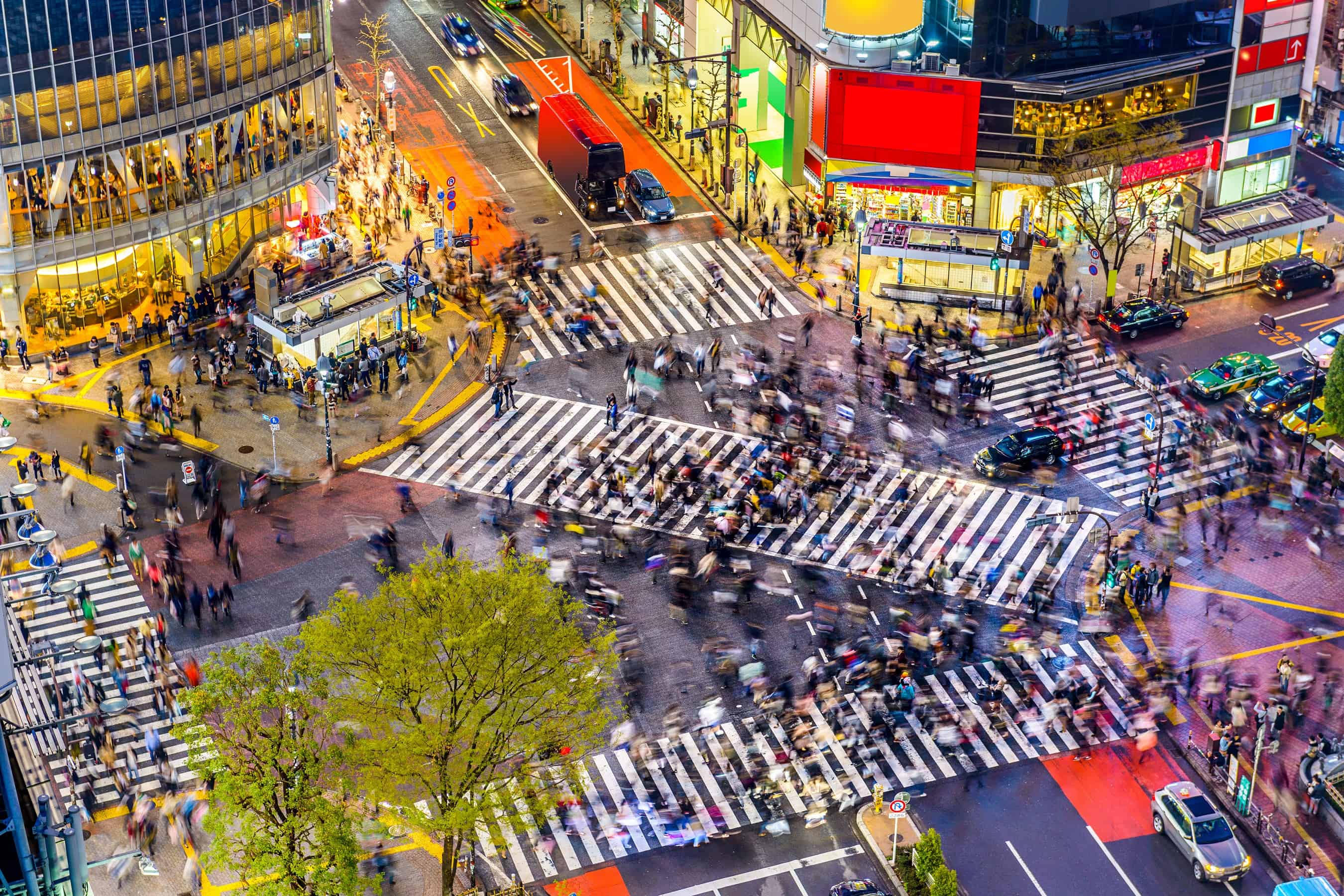Tokyo is central to Japan. From its government to its culture, it all goes down in this massive metropolis. Considered one of the world's most modern cities in infrastructure and design, visitors can get almost anywhere via their extensive train system. On the cultural side, this city of light and concrete holds it all from numerous museums, festivals, internationally renowned cuisine to unique Japanese sports like Sumo wrestling. While there is a lot of ground to cover in Tokyo, it is home to some of the most breath-taking sites in Japan.
The Imperial Palace

Tokyo's Imperial Palace is one of the chief attractions in the city. Although the palace sits surrounded by 17th century parks as well as a series of walls and moats, the palace actually sits on the site where Lord Ota Dokan built his first fortress in 1457. This fortress became the focal point of Tokyo in which the city was built around before the earthquake in 1929 leveled a good portion Tokyo, ultimately leading to its brilliant modern infrastructure. Visitors can tour the famous structures of the Imperial Palace such as the Nijubashi, or "Double," Bridge that gets its name from the reflection it casts on the water or the only public space in the Imperial Palace, the East Higashi-Gyoen Garden. The Garden opens twice a year on January 2nd and April 29th allowing the crowds from the city flock in to enjoy the natural space and catch a glimpse of the Emperor.
Senso-Ji Temple

Getting to Senso-Ji Temple in Tokyo's Asakusa neighbourhood is an experience in and of itself. This massive temple sits at the back end of a long line of shops selling traditional masks, carvings, combs made of ebony, toys, kimonos and paper goods. In fact, some visitors that are easily tempted by Japan's unique array of souvenirs may not make it to the temple at all. The Senso-Ji Temple was built in 645 AD and dedicated to the Buddhist goddess of compassion, Kannon. Even though the Senso-Ji Temple has been destroyed and rebuilt a number of times throughout its history, it still retains its same design. Visitors pass through the red lacquered, paper lantern-laden gates to enjoy the sacred air of the temple. A good deal of the sacredness in the air is due to the temple's famous incense vats that spits perfumed smoke that is said to drive away ailments. Before leaving, it is also worth having your fortune told by the temple doves, the goddess Kannon's messengers. These doves can apparently predict your future by pulling a card from the deck and having their human peers interpret it.
The Tokyo Tower and Tokyo Skytree

The Tokyo Tower gained eternal fame in Tokyo due to its similar appearance to the Eiffel Tower in Paris. Like its cousin in France, the Tokyo Tower dominated the attention of tourists to the city after the sun set and the tower was wrapped in white and orange warm lights at night. However, can the Tokyo Tower keep its crowd now that there is a new kid on the block? Only time will tell. The Tokyo Skytree was built in 2012 and towers 634 metres high. Compared to the Tokyo Tower's 333 metres, it is twice the size of Tokyo's old landmark. While the Tokyo Tower may still draw in the romantic couples with its warm light, the Tokyo Skytree features the whole spectrum of different colours as it lights up the night sky.
National Sumo Hall

The two must-see traditional Japanese activities in Tokyo are Kabuki theatre and Sumo wrestling. While both are equally interesting, for those that don't much feel like using the interpretive part of their brain will enjoy the simple, yet intense sport of Sumo. Nowhere in the world will visitors see a sport quite like this. The Sumo wrestlers lock bodies for a few intense seconds before one is inevitably forced from the ring, losing the match. In between the intensity, there is a lot of posturing, stomping and salt-tossing to intimidate their opponents. Japan holds three wrestling tournaments at the massive National Sumo Hall in January, May and September, but for those that visit outside of those times they can view the early morning training matches at local Sumo stables for free.
Kabukicho

Nicknamed the "Sleepless Town," Kabukicho is Tokyo's red light district and has become famous worldwide for its selection of hostess bars, host bars and love hotels where visitors can pay by the hour to get a "seductive" (read: kitschy and possibly creepy) room for visitors and their significant others to enjoy. Host and hostess clubs, on the other hand, provide some no-strings-attached conversation and fun with attractive members of the opposite sex, for a price, that is. There is always some party going on in Kabukicho leading to its nickname. The district was named in the 1940s when there were plans to build a Kabuki theatre in the area. However, when the budgeting fell through, and all the risqué clubs moved in, the name still stuck. Whether visitors are lonely or just curious, Kabukicho is always a fascinating place to explore.
Have you ever visited Tokyo?
What is your favourite part of the city?
Comment below or tweet us!
Related content on Canadian Traveller


